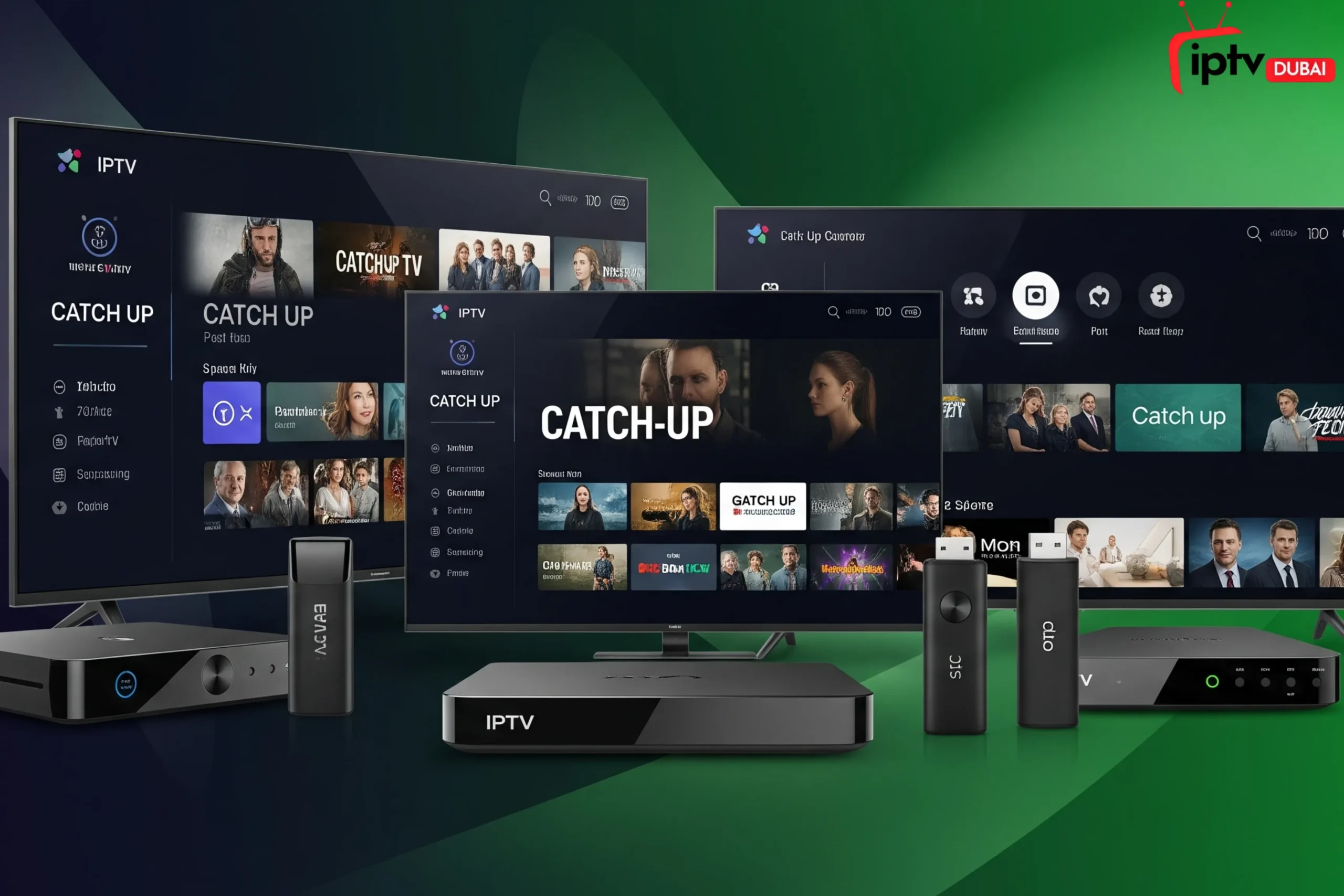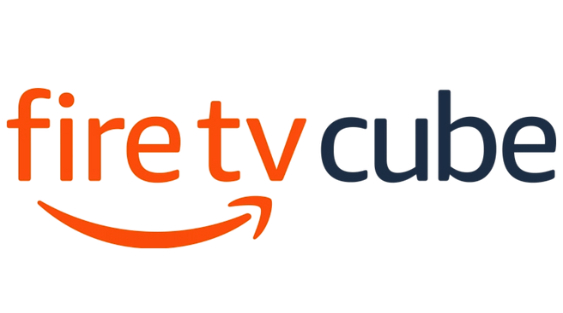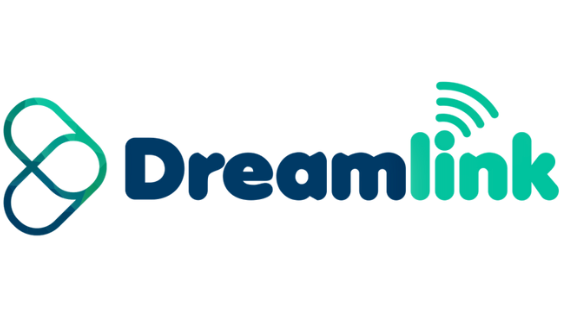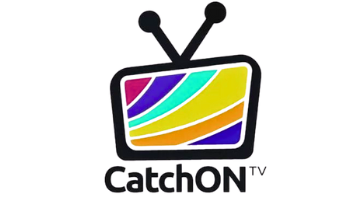Blog
IPTV with Catch-Up Feature – Which Boxes Support It?

The evolution of television viewing has reached new heights with Internet Protocol Television (IPTV) and its revolutionary catch-up feature. As traditional broadcasting gives way to streaming services, viewers increasingly demand flexibility in how and when they consume content. IPTV catch-up functionality bridges the gap between live TV channels and on-demand content, allowing users to access previously aired programs at their convenience.
This comprehensive guide explores the world of IPTV catch-up services, examining compatible devices, benefits, limitations, and future trends. Whether you’re using a Firestick, Android box, or smart TV, understanding which platforms support catch-up TV can transform your viewing experience and help you make informed decisions about your streaming service subscription.
Benefits of IPTV’s Catch-Up Feature
The catch-up feature in IPTV services represents a paradigm shift in television consumption, offering viewers unprecedented control over their entertainment experience. This functionality transforms traditional linear TV viewing into a flexible, user-centric platform that adapts to modern lifestyles and viewing preferences.
IPTV catch-up services eliminate the frustration of missing favorite programs due to scheduling conflicts or unexpected commitments. By providing access to previously aired content, these services ensure that viewers maintain connection with their preferred TV channels and programs without being constrained by broadcast schedules. The integration of catch-up functionality with live streaming creates a comprehensive entertainment ecosystem that caters to diverse viewing habits and preferences.
Flexibility and Convenience
The catch-up feature revolutionizes how viewers interact with TV channels by eliminating the constraints of traditional broadcasting schedules. Unlike conventional live TV, IPTV catch-up allows users to watch missed programs on smartphones, tablets, or any compatible streaming device. This flexibility means you’re no longer tied to specific broadcast times, making it easier to balance entertainment with busy lifestyles.
The convenience extends beyond simple playback – most IPTV platforms offer intuitive interfaces that make finding and accessing catch-up content effortless. Users can browse through extensive program libraries, search for specific shows, and even set reminders for future broadcasts, all while enjoying high streaming quality comparable to live channels.
Time Zone Independence
One of the most significant advantages of IPTV catch-up services is their ability to transcend geographical and temporal boundaries. Viewers can access content from different time zones without worrying about scheduling conflicts or missing important programs due to location-based broadcast times.
This feature proves particularly valuable for international content consumption, allowing users to stay connected with news, sports, and entertainment from their home countries regardless of where they’re located. The Internet Protocol Television infrastructure ensures seamless delivery of catch-up content across various protocols and platforms.
Extensive Content Library Access
IPTV catch-up features typically provide access to vast archives of previously aired content, often spanning several days or weeks. This extensive library transforms your streaming service into a comprehensive entertainment hub where live TV channels merge seamlessly with on-demand offerings.
The breadth of available content often surpasses traditional on-demand services, as catch-up libraries include news programs, documentaries, sports events, and specialized programming that might not be available through other streaming platforms. This comprehensive approach ensures viewers never miss important content, regardless of their viewing schedule.
How the Catch-Up Feature Works
Understanding the technical infrastructure behind IPTV catch-up services helps users appreciate the complexity and sophistication of modern streaming technology. The catch-up functionality relies on advanced content delivery networks, cloud storage systems, and intelligent streaming protocols that work together to provide seamless access to previously aired programming.
The process begins when live TV channels broadcast content through Internet Protocol Television networks. Simultaneously, IPTV platforms capture, encode, and store this content in multiple formats and quality levels to accommodate different devices and internet connection speeds. This multi-layered approach ensures optimal performance across various viewing scenarios while maintaining content quality and accessibility.
Modern IPTV catch-up systems utilize adaptive streaming technology that automatically adjusts video quality based on real-time network conditions and device capabilities. This intelligent approach minimizes buffering issues while maximizing streaming quality, creating smooth viewing experiences regardless of technical constraints or varying internet connectivity.
Advanced Streaming Technology
IPTV catch-up functionality relies on sophisticated streaming technology that captures, stores, and delivers content through internet protocols. When live TV channels broadcast programs, the IPTV platform simultaneously records and processes this content for later access. The technology ensures minimal buffering and maintains high streaming quality throughout the catch-up viewing experience.
The underlying infrastructure utilizes adaptive bitrate streaming, automatically adjusting video quality based on internet connectivity and device capabilities. This smart approach ensures optimal performance whether you’re watching on smart TVs, Android devices, or mobile smartphones.
Cloud DVR Integration
Modern IPTV platforms integrate cloud-based Digital Video Recorder (DVR) functionality that powers the catch-up feature. Unlike traditional DVR systems that require physical storage devices, cloud DVR stores content on remote servers, making it accessible across multiple devices and platforms.
This integration allows seamless synchronization between different viewing devices – you can start watching a program on your Firestick and continue on your smartphone without losing your place. The cloud-based approach also eliminates storage limitations that plague traditional recording methods.
Limitations of the Catch-Up Feature
While IPTV catch-up services offer remarkable convenience and flexibility, they also face several inherent limitations that affect user experience and content availability. Understanding these constraints helps users set realistic expectations and make informed decisions about their streaming service subscriptions and device choices.
The limitations stem from various factors including technical infrastructure costs, content licensing complexities, and the fundamental requirements of internet-based content delivery. These challenges affect different aspects of the catch-up experience, from content availability and archive duration to streaming quality and device compatibility.
Despite ongoing technological advances and infrastructure improvements, these limitations remain significant considerations for users evaluating IPTV catch-up services. Awareness of these constraints enables better decision-making regarding subscription choices, device selection, and internet connectivity requirements for optimal catch-up viewing experiences.
Storage Constraints
Despite cloud-based solutions, IPTV catch-up services face storage limitations that affect content availability. Most platforms maintain catch-up libraries for limited periods, typically ranging from 7 to 30 days, after which older content becomes unavailable. These constraints are necessary to manage server costs and storage infrastructure efficiently.
The storage limitations also affect the variety of channels included in catch-up services. While major TV channels typically offer comprehensive catch-up support, smaller or specialized channels might have limited or no catch-up availability, depending on the IPTV platform and subscription tier.
Licensing Issues
Content licensing presents significant challenges for IPTV catch-up services, as broadcasting rights often differ from on-demand distribution rights. Some programs available on live channels may not appear in catch-up libraries due to licensing restrictions, creating gaps in available content.
These licensing complexities particularly affect international content and premium programming, where rights holders maintain strict control over distribution methods. Users might find that certain shows or channels have limited catch-up availability despite being accessible through live streaming.
Internet Connectivity Requirements
IPTV catch-up features demand stable, high-speed internet connections to function effectively. Unlike traditional broadcasting that delivers consistent quality regardless of individual connectivity, catch-up services rely entirely on internet infrastructure. Poor connectivity can result in buffering issues, reduced streaming quality, or complete service interruption.
The bandwidth requirements for catch-up content often exceed those of live streaming, as the service needs to deliver high-quality video while maintaining responsive interface interactions. Users with limited internet plans or unstable connections may experience degraded performance.
Devices Supporting IPTV Catch-Up
The landscape of IPTV catch-up compatible devices has expanded dramatically as streaming technology has matured and consumer demand for flexible viewing options has grown. Today’s market offers numerous device categories, each with distinct advantages and limitations for catch-up functionality.
Device compatibility extends beyond simple application support to encompass performance capabilities, user interface design, and integration with various IPTV platforms and protocols. The choice of device significantly impacts the overall catch-up viewing experience, affecting everything from content navigation speed to streaming quality and feature availability.
Understanding device capabilities and limitations helps users select hardware that aligns with their viewing preferences, technical requirements, and budget constraints. The rapid evolution of streaming technology means that device selection has become increasingly important for maximizing the benefits of IPTV catch-up services.
Popular IPTV Boxes with Catch-Up
Several dedicated IPTV boxes excel at delivering catch-up functionality with robust performance and user-friendly interfaces. The NVIDIA Shield TV stands out as a premium Android-based platform offering exceptional streaming quality and comprehensive app support for various IPTV services. Its powerful processor ensures smooth navigation through catch-up libraries without buffering issues.
Amazon Fire TV Stick (Firestick) represents an affordable yet capable option for IPTV catch-up services. Despite its compact size, the Firestick delivers reliable performance for most streaming services and supports numerous IPTV applications with catch-up functionality. The device’s popularity has led to extensive app compatibility and regular software updates.
MAG boxes, specifically designed for IPTV services, offer specialized features optimized for catch-up viewing. These devices typically provide superior performance for IPTV-specific functions, including seamless catch-up navigation and enhanced streaming protocols designed for Internet Protocol Television delivery.
Compatibility with Different Platforms
Modern smart TVs increasingly support IPTV catch-up services through built-in applications or web browsers. Samsung, LG, and Sony smart TVs offer varying levels of IPTV compatibility, with newer models providing better support for advanced streaming protocols and catch-up functionality.
Android-based devices, including smartphones, tablets, and Android TV boxes, generally offer the broadest compatibility with IPTV catch-up services. The open nature of the Android platform allows developers to create sophisticated applications that fully utilize catch-up features while maintaining consistent performance across different device specifications.
Apple devices, including Apple TV, iPad, and iPhone, support IPTV catch-up through dedicated applications available on the App Store. While the selection might be more limited compared to Android platforms, the available applications typically offer polished interfaces and reliable performance.
Device Performance and Speed
The effectiveness of IPTV catch-up features heavily depends on device processing power and memory capacity. Higher-end devices with robust processors and ample RAM provide smoother navigation through catch-up libraries, faster content loading times, and better multitasking capabilities when switching between live channels and on-demand content.
Storage capacity also affects catch-up performance, particularly for devices that cache content locally to improve playback quality. Devices with limited storage might experience performance issues when accessing extensive catch-up libraries or maintaining multiple content streams simultaneously.
Network connectivity capabilities vary significantly between devices, affecting catch-up streaming quality. Devices with Ethernet connections typically provide more stable performance than those relying solely on Wi-Fi, particularly important for high-definition catch-up content that demands consistent bandwidth.
Choosing the Right IPTV Box
Selecting the optimal IPTV box for catch-up functionality requires careful consideration of multiple factors that directly impact viewing experience and long-term satisfaction. The decision involves balancing performance requirements, feature preferences, and budget constraints while ensuring compatibility with preferred IPTV services and catch-up platforms.
The market offers devices ranging from basic streaming sticks to high-performance media centers, each designed for different user needs and technical requirements. Understanding these distinctions helps users avoid common pitfalls such as purchasing underpowered devices that struggle with catch-up functionality or overspending on features they won’t utilize.
Modern IPTV boxes incorporate various technologies and design philosophies, making direct comparisons challenging without understanding specific use cases and requirements. The rapid pace of technological advancement means that device selection has become increasingly complex, requiring users to consider both current needs and future compatibility requirements.
Essential Features to Consider
When selecting an IPTV box for catch-up functionality, processor speed and RAM capacity should be primary considerations. Look for devices with at least 2GB of RAM and quad-core processors to ensure smooth performance when navigating catch-up libraries and streaming high-quality content simultaneously.
Storage options matter significantly for catch-up services, as local caching can improve performance and reduce buffering. Choose devices with expandable storage or generous built-in capacity to accommodate temporary content storage and application data.
Network connectivity features, including dual-band Wi-Fi support and Ethernet ports, ensure reliable streaming quality for catch-up content. Devices supporting the latest Wi-Fi standards (Wi-Fi 6) provide better performance in congested network environments.
User Interface and Experience
The interface design significantly impacts the catch-up viewing experience, making intuitive navigation essential for enjoyable content consumption. Look for IPTV boxes that support applications with clean, responsive interfaces that make browsing catch-up libraries effortless.
Remote control functionality and alternative input methods, such as voice control or smartphone apps, enhance the user experience when searching through extensive catch-up content libraries. Some devices offer advanced remote controls with dedicated buttons for catch-up functions.
Customization options allow users to personalize their catch-up viewing experience, including favorites lists, viewing history, and personalized recommendations based on viewing patterns. These features become increasingly important as catch-up libraries expand.
Budget Considerations
Entry-level IPTV devices, including basic Firestick models and budget Android boxes, can provide adequate catch-up functionality for users with modest requirements. These devices typically cost between $30-60 and offer sufficient performance for standard-definition and basic high-definition catch-up content.
Mid-range options, priced between $60-150, offer enhanced performance, better build quality, and more comprehensive feature sets. These devices typically provide smoother catch-up navigation, support for 4K content, and better long-term reliability.
Premium IPTV boxes, costing $150 and above, deliver exceptional performance, advanced features, and future-proof specifications. These devices excel at handling multiple simultaneous streams, offer extensive connectivity options, and provide the best possible catch-up viewing experience.
Future Trends in IPTV Catch-Up Services
The evolution of IPTV catch-up services continues accelerating as technological advances, changing consumer preferences, and competitive pressures drive innovation across the streaming industry. Emerging trends suggest significant transformations in how catch-up content is delivered, discovered, and consumed across various platforms and devices.
Artificial intelligence, machine learning, and advanced data analytics are reshaping catch-up services by enabling more sophisticated personalization, predictive content caching, and intelligent user interfaces. These technologies promise to make catch-up libraries more accessible and relevant while reducing the complexity of content discovery in increasingly vast program archives.
The convergence of various entertainment technologies, including virtual reality, augmented reality, and social media integration, is creating new possibilities for catch-up viewing experiences. These developments suggest that future catch-up services will extend far beyond simple program playback to encompass immersive, interactive, and socially connected viewing experiences.
Personalized Viewing Enhancements
Artificial intelligence and machine learning technologies are revolutionizing IPTV catch-up services by providing increasingly sophisticated personalization features. Future platforms will analyze viewing patterns, preferences, and behavior to automatically curate catch-up content recommendations, making content discovery more intuitive and engaging.
Advanced personalization will extend beyond simple recommendations to include automated content categorization, intelligent scheduling suggestions, and predictive content caching that anticipates user preferences. These enhancements will make catch-up libraries more accessible and relevant to individual viewers.
Integration with social media and sharing platforms will allow users to discover catch-up content through friend recommendations and social viewing experiences, creating community-driven content discovery mechanisms that enhance the traditional catch-up model.
Smarter Interface Developments
Voice control and natural language processing will transform how users interact with catch-up services, allowing conversational searches and commands that make content discovery more intuitive. Users will be able to request specific programs, genres, or time periods using natural speech patterns.
Augmented reality and enhanced visual interfaces will provide new ways to browse catch-up libraries, offering immersive content discovery experiences that go beyond traditional grid-based program guides. These interfaces will make navigating extensive content archives more engaging and efficient.
Cross-platform synchronization will become more sophisticated, allowing seamless transitions between devices while maintaining viewing progress, preferences, and personalized settings across smartphones, smart TVs, and dedicated IPTV boxes.
Extended Archives and Content Availability
Cloud storage costs continue decreasing, enabling IPTV providers to maintain longer catch-up archives and more comprehensive content libraries. Future services may offer catch-up periods extending months or even years, transforming catch-up services into comprehensive content archives.
Improved licensing agreements and content partnerships will expand the variety of programs available through catch-up services, potentially including premium content, international programming, and specialized channels that currently have limited catch-up availability.
Integration with traditional on-demand services will blur the lines between catch-up TV and streaming platforms, creating unified content ecosystems where live channels, catch-up services, and on-demand libraries merge into seamless viewing experiences.
Conclusion
IPTV catch-up features represent a significant evolution in television consumption, offering unprecedented flexibility and convenience for modern viewers. The technology bridges the gap between traditional live TV channels and on-demand content, creating viewing experiences that adapt to individual schedules and preferences.
Success with IPTV catch-up services depends largely on choosing compatible devices that can handle the demanding requirements of streaming protocols and content delivery. Whether you prefer the affordability of a Firestick, the versatility of Android platforms, or the integration of smart TVs, understanding device capabilities ensures optimal performance and user satisfaction.
As Internet Protocol Television continues evolving, catch-up features will become increasingly sophisticated, offering enhanced personalization, extended content archives, and smarter interfaces. The future promises even greater flexibility in how we consume television content, making catch-up functionality an essential consideration for anyone evaluating IPTV subscription options.
The investment in quality IPTV hardware and reliable streaming services pays dividends in viewing flexibility and content access. By understanding the benefits, limitations, and device requirements outlined in this guide, you can make informed decisions that enhance your television viewing experience for years to come.
FAQs
What is IPTV catch-up and how does it work?
IPTV catch-up is a feature that allows viewers to watch previously aired TV programs on-demand through internet streaming. It works by recording live TV channels and storing the content on cloud servers, making it accessible for a limited time period (typically 7-30 days) after the original broadcast.
Which devices support IPTV catch-up features?
Most modern streaming devices support IPTV catch-up, including Amazon Firestick, Android TV boxes, NVIDIA Shield TV, MAG boxes, smart TVs from major manufacturers, and mobile devices (smartphones and tablets). Compatibility depends on the specific IPTV service and available applications.
Do I need a special subscription for catch-up TV?
Catch-up functionality is typically included with standard IPTV subscriptions, though availability varies by provider and channel. Some premium channels or extended archive periods may require upgraded subscription tiers or additional fees.
What internet speed do I need for IPTV catch-up?
For standard definition catch-up content, you need at least 5 Mbps internet speed. High-definition content requires 10-15 Mbps, while 4K catch-up streaming needs 25 Mbps or higher. Stable connectivity is more important than peak speeds for consistent performance.
How long is catch-up content available?
Most IPTV services maintain catch-up libraries for 7-30 days after original broadcast, though this varies by provider and channel. Some premium services offer extended archives, while others may have shorter availability periods due to licensing restrictions.
Can I download catch-up content for offline viewing?
Most IPTV catch-up services don’t support offline downloads due to licensing restrictions and content protection requirements. Content typically requires active internet connectivity for streaming, though some platforms may offer limited offline functionality for specific programs.



















